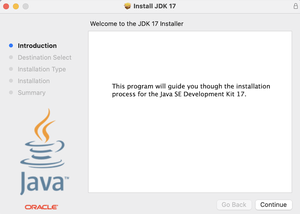

- #Java 8 mac os x already installed force reinstall how to
- #Java 8 mac os x already installed force reinstall install
- #Java 8 mac os x already installed force reinstall drivers
- #Java 8 mac os x already installed force reinstall update
- #Java 8 mac os x already installed force reinstall android

#Java 8 mac os x already installed force reinstall android
I was happy with this until I started doing Android development, which throws errors relating to Java 7. Selecting a region changes the language and/or content on . I recently installed Oracles Java 7 for OS X on my Mac running Mountain Lion (10.8.2).
#Java 8 mac os x already installed force reinstall install
Im trying to install OS X Mavericks in VirtualBox on Windows 8.1. Otherwise, these following topics would be helpful. If you have not yet installed Apples Java macOS 2012-006 update, then you are still using a version of Apple Java 6 that includes the plug-in and the Java Preferences application.
#Java 8 mac os x already installed force reinstall how to
#Java 8 mac os x already installed force reinstall update
Running the Java Preferences utilily shows that the most recent version of Java installed on my Mac Pro in Snow Leopard (10.6.8) is Java SE6 v1.6.051-b11-456 (both 32-bit and 64-bit versions are available), which was installed with Update 16. If the Java runtime is not installed, some issues that are known to occur include - Likewise, there’s no Update 17 available (yet) on Apple’s website as of the time of this posting. The 10.6.6 combo updater of course will not do the job because it needs an older OS X incarnation and I'm running 10.6.8. Now I would like to reinstall, but I cannot find a way. Adobe recommends that corporate IT organizations pre install Java (or make sure that Java can be installed through their firewalls/security) to avoid conflicts with Adobe applications. I deleted the App Store application with AppCleaner some months ago, after ongoing problems with a freezing Finder. If you encounter any issues, install Java to correct the problems. If you do not install Java before running an Adobe application, there can be missing or improperly behaving features. At runtime, when you launch an Adobe application, you are prompted to install Java if it is not already installed. Or it can be installed later before you install Adobe applications. Adobe and Apple have worked together to ensure that you can install Java at OS install time. Tip: If you know the order in which you installed them. Uninstall and Reinstall Minecraft: Java Edition.
#Java 8 mac os x already installed force reinstall drivers
Since current Adobe installers and applications were built before these changes by Apple, Adobe software anticipates that Java is installed. Mac OS X: Most Apple computers come with built-in drivers and a graphics card that cannot be changed. It is now an optional install that you must select. There’s really no reason to have it installed anymore, especially now that Minecraft has its own bundled Java for both OS X and Windows. Apple recently changed the way it includes Java in Mac OS, and with Lion, Java is no longer preinstalled. Java is, and always has been, the source of many woes. The system will not install a JRE that has an earlier version than the current version.Many Adobe applications depend on the Oracle Java Runtime Environment (JRE) for some features to work. When you install the JRE, you can install only one JRE on your system at a time. To install an earlier version of the JRE, you must first uninstall the current version. The process should be the same for the JRE and newer Java versions, with minor changes to the folder names (Update 45 JDK has 45 in the paths above), but I did not test any other option. If you have already installed OS X 10.9.3, then in order to roll back you will need to restore to a backup, or reinstall. To determine the current JRE version installed on your system, see Determining the JRE Version Installed on macOS. Note that I am using Mac OS X Mavericks 10.9.2 Yosemite 10.10.3 and JDK 8 Update 45, not just the JRE. However, the system will not replace the current JRE with a lower version.

When you install the JDK, it also installs the JRE. Administrator privileges are required to install the JDK and JRE on macOS. brew install openjdk11 > openjdk is keg-only, which means it was not symlinked into /usr/local, because macOS provides similar software and installing this software in parallel can cause all kinds of trouble. Installing the JDK and JRE on macOS is performed on a systemwide basis for all users. I have cask installed already, so for me it’s a simple matter. The installation via homebrew is about as simple as expected. You cannot install Java for a single user. Apparently in older versions of OS X it was possible to run /usr/libexec/javahome -uninstall to get rid of a Java install, but that option does not appear to work in OS X Sierra anymore. The following are the system requirements for installing the JDK and the JRE on macOS:


 0 kommentar(er)
0 kommentar(er)
